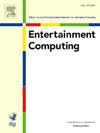Unveiling gender bias in LLM-generated hero and heroine narratives
IF 2.4
3区 计算机科学
Q2 COMPUTER SCIENCE, CYBERNETICS
引用次数: 0
Abstract
This article investigates gender bias in narratives generated by Large Language Models (LLMs) through a two-phase study. Building on our existing work in narrative generation, we employ a structured methodology to analyze the influence of protagonist gender on both the generation and classification of fictional stories. In Phase 1, factual narratives were generated using six LLMs, guided by predefined narrative structures (Hero’s Journey and Heroine’s Journey). Gender bias was quantified through specialized metrics and statistical analyses, revealing significant disparities in protagonist gender distribution and associations with narrative archetypes. In Phase 2, counterfactual narratives were constructed by altering the protagonists’ genders while preserving all other narrative elements. These narratives were then classified by the same LLMs to assess how gender influences their interpretation of narrative structures. Results indicate that LLMs exhibit difficulty in disentangling the protagonist’s gender from the narrative structure, often using gender as a heuristic to classify stories. Male protagonists in emotionally driven narratives were frequently misclassified as following the Heroine’s Journey, while female protagonists in logic-driven conflicts were misclassified as adhering to the Hero’s Journey. These findings provide empirical evidence of embedded gender biases in LLM-generated narratives, highlighting the need for bias mitigation strategies in AI-driven storytelling to promote diversity and inclusivity in computational narrative generation.
揭示法学硕士生成的男女主人公叙事中的性别偏见
本文通过两个阶段的研究,探讨了大型语言模型(LLMs)生成的叙事中的性别偏见。在我们已有的叙事生成研究的基础上,我们采用结构化的方法来分析主人公性别对虚构故事生成和分类的影响。在第一阶段,使用六个llm生成事实叙事,并以预定义的叙事结构(英雄之旅和女主角之旅)为指导。性别偏见通过专门的指标和统计分析进行量化,揭示了主角性别分布的显著差异及其与叙事原型的关联。在第二阶段,通过改变主角的性别而保留所有其他叙事元素来构建反事实叙事。这些叙事然后由相同的法学硕士分类,以评估性别如何影响他们对叙事结构的解释。研究结果表明,法学硕士很难将主人公的性别从叙事结构中分离出来,他们经常使用性别作为对故事进行分类的启发式。情感驱动叙事中的男主角经常被错误地归类为跟随女主角的旅程,而逻辑驱动冲突中的女主角则被错误地归类为遵循英雄的旅程。这些发现提供了法学硕士生成的叙事中嵌入性别偏见的经验证据,强调了在人工智能驱动的叙事中需要采取减轻偏见的策略,以促进计算叙事生成中的多样性和包容性。
本文章由计算机程序翻译,如有差异,请以英文原文为准。
求助全文
约1分钟内获得全文
求助全文
来源期刊

Entertainment Computing
Computer Science-Human-Computer Interaction
CiteScore
5.90
自引率
7.10%
发文量
66
期刊介绍:
Entertainment Computing publishes original, peer-reviewed research articles and serves as a forum for stimulating and disseminating innovative research ideas, emerging technologies, empirical investigations, state-of-the-art methods and tools in all aspects of digital entertainment, new media, entertainment computing, gaming, robotics, toys and applications among researchers, engineers, social scientists, artists and practitioners. Theoretical, technical, empirical, survey articles and case studies are all appropriate to the journal.
 求助内容:
求助内容: 应助结果提醒方式:
应助结果提醒方式:


